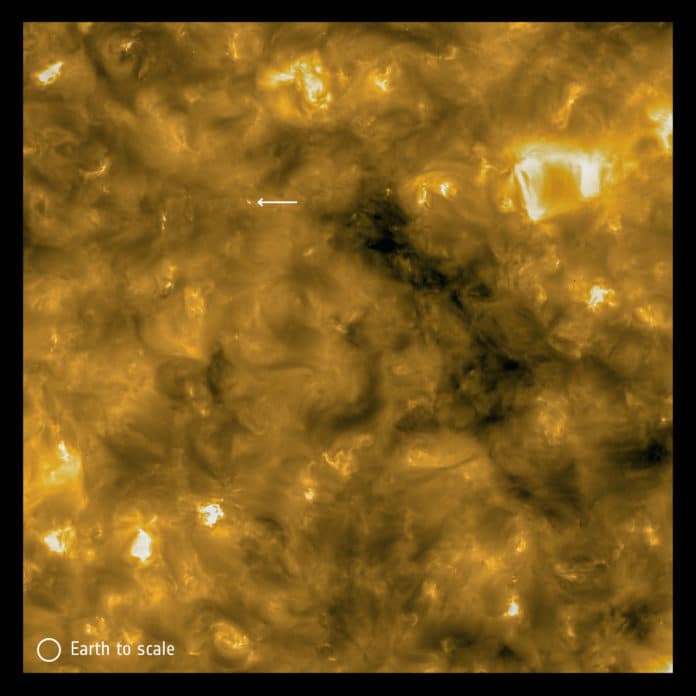Launched in February 2020, Solar Orbiter is the most complex scientific laboratory ever sent to the Sun.
Solar Orbiter has ten scientific instruments: six remote-sensing instruments and four sets of in situ instruments. The remote sensing instruments look at the Sun and its extended atmosphere, the corona. The in-situ instruments measure the particles around the spacecraft, which have been released by the Sun and are known as the solar wind, along with its magnetic and electric fields.
Recent results from Solar Orbiter show that the mission is making the first direct connections between events at the solar surface and what’s happening in interplanetary space around the spacecraft. It is also giving us new insights into solar ‘campfires,” space weather, and disintegrating comets.
Daniel Müller, ESA Solar Orbiter Project Scientist, said, “I could not be more pleased with the performance of Solar Orbiter and the various teams that keep it and its instruments operating. It has been a real team effort under difficult circumstances this year, and now we are beginning to see those efforts paying off.”
Solar Orbiter data have made it conceivable to compute the source region of the solar wind that hits the shuttle and distinguish this footprint in the far off detecting pictures. In an example studied in June 2020, the footprint is seen at the edge of a region called a ‘coronal hole,” where the Sun’s magnetic field reaches out into space, allowing the solar wind to flow.
Even though the work is preliminary, it is still beyond anything possible so far.
The mission’s first images showed a multitude of tiny solar eruptions bursting across the surface of the Sun. The researchers called them campfires because the specific energy-related to these events isn’t yet known. Without energy, it isn’t clear whether they are the same phenomenon as other small-scale eruptive events seen by other missions. What makes everything so enticing that small-scale ‘nano-flares’ have long been thought to exist on the Sun, yet we’ve never had the way to see events this small previously.
Frédéric Auchère, Institut d’Astrophysique Spatiale, Orsay, France, and Chair of the Solar Orbiter Remote-Sensing Working Group said, “The campfires could be the nano-flares that we are after with Solar Orbiter.”
To investigate this idea, analysts have been examining information by Solar Orbiter’s SPICE instrument. It has demonstrated that small-scale events in which the gas is moving with significant velocity searching for a connection to the campfires have not yet been finished.
Frédéric said, “Right now, we only have commissioning data, taken when the teams were still learning the behaviors of their instruments in space, and the results are very preliminary. But clearly, we do see exciting things. Solar Orbiter is all about discovery, and that is very exciting.”
For much of its time in space, Solar Orbiter has been measuring the solar wind and recording several particle ejections from the Sun.
On 19 April, a particularly interesting coronal mass ejection swept across Solar Orbiter. During this event, Solar Orbiter was about twenty percent from the Earth to the Sun.
On 27 December, Solar Orbiter will complete its first Venus flyby. This event will use the planet’s gravity to swing the spacecraft closer to the Sun, putting Solar Orbiter in an even better position for joint measurements with NASA’s Parker Solar Probe, which will also complete two Venus flybys in 2021.
